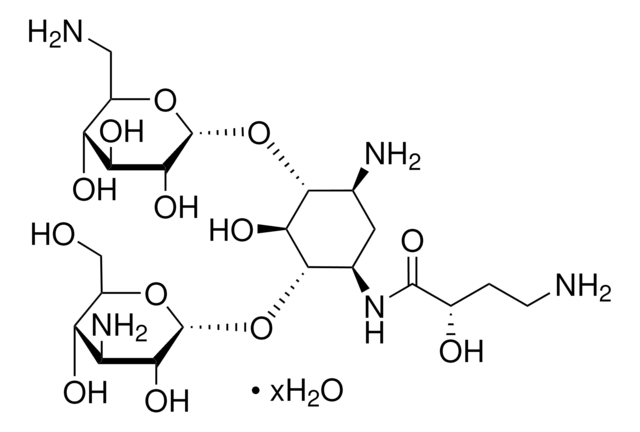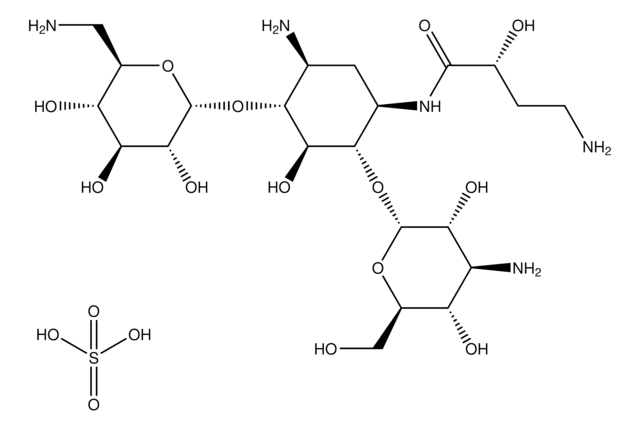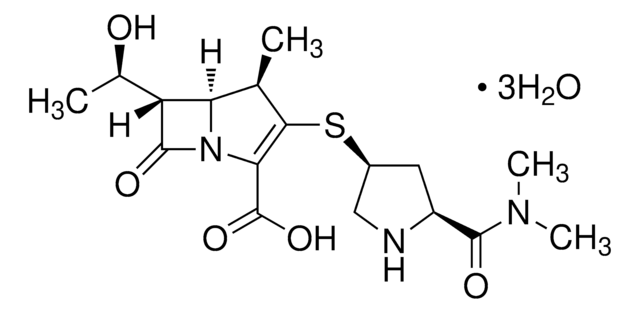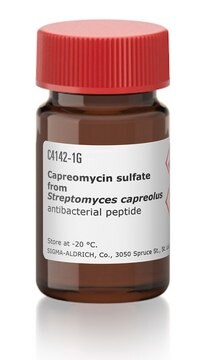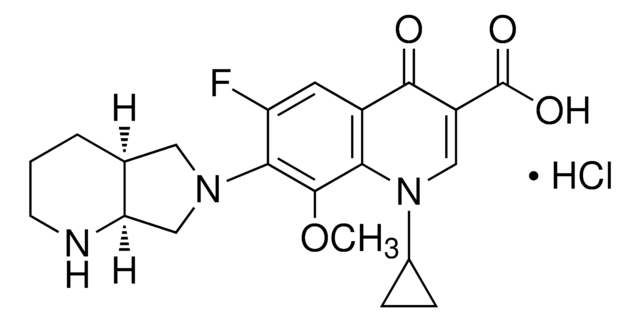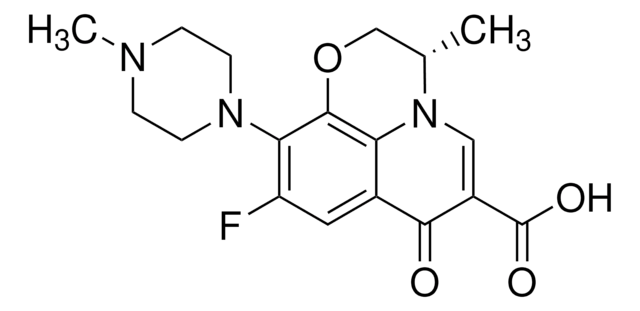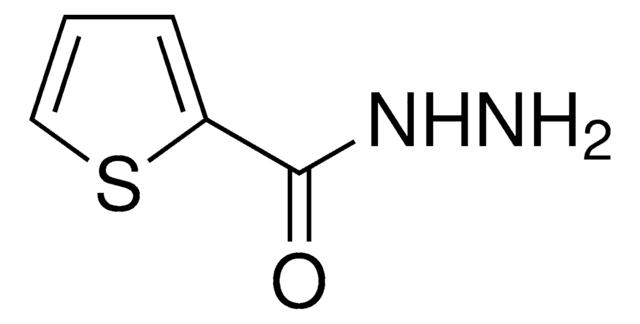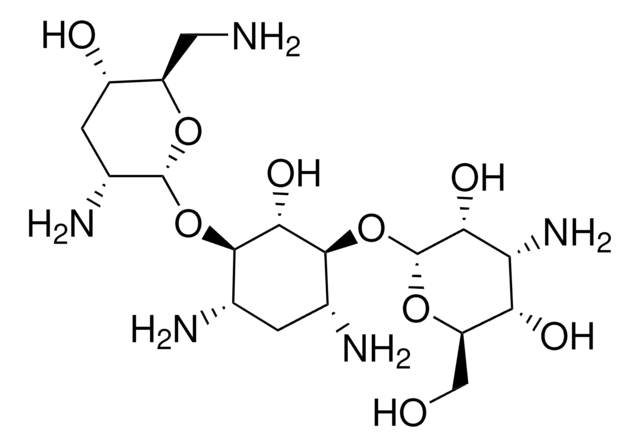A1774
Amikacin disulfate salt
potency: 674-786 μg per mg (as amikacin base)
Synonyme(s) :
(2S)-4-amino-N-[(1R,2S,3S,4R,5S)-5-amino-2-(3-amino-3-deoxy-alpha-D-glucopyranosyloxy)-4-(6-amino-6-deoxy-alpha-D-glucopyranosyloxy)-3-hydroxycyclohexyl]-2-hydroxybutanamide disulfate, Antibiotic BB-K8 sulfate
About This Item
Produits recommandés
Source biologique
synthetic
Forme
powder or crystals
Puissance
674-786 μg per mg (as amikacin base)
Couleur
white to off-white
Spectre d'activité de l'antibiotique
Gram-negative bacteria
mycobacteria
Mode d’action
protein synthesis | interferes
Température de stockage
2-8°C
Chaîne SMILES
OS(O)(=O)=O.OS(O)(=O)=O.NCC[C@H](O)C(=O)N[C@@H]1C[C@H](N)[C@@H](O[C@H]2O[C@H](CN)[C@@H](O)[C@H](O)[C@H]2O)[C@H](O)[C@H]1O[C@H]3O[C@H](CO)[C@@H](O)[C@H](N)[C@H]3O
InChI
1S/C22H43N5O13.2H2O4S/c23-2-1-8(29)20(36)27-7-3-6(25)18(39-22-16(34)15(33)13(31)9(4-24)37-22)17(35)19(7)40-21-14(32)11(26)12(30)10(5-28)38-21;2*1-5(2,3)4/h6-19,21-22,28-35H,1-5,23-26H2,(H,27,36);2*(H2,1,2,3,4)/t6-,7+,8-,9+,10+,11-,12+,13+,14+,15-,16+,17-,18+,19-,21+,22+;;/m0../s1
Clé InChI
FXKSEJFHKVNEFI-GCZBSULCSA-N
Vous recherchez des produits similaires ? Visite Guide de comparaison des produits
Description générale
Application
Actions biochimiques/physiologiques
Conditionnement
Autres remarques
Mention d'avertissement
Warning
Mentions de danger
Conseils de prudence
Classification des risques
Repr. 2 - Skin Sens. 1
Code de la classe de stockage
11 - Combustible Solids
Classe de danger pour l'eau (WGK)
WGK 2
Point d'éclair (°F)
Not applicable
Point d'éclair (°C)
Not applicable
Équipement de protection individuelle
Eyeshields, Gloves, type N95 (US)
Certificats d'analyse (COA)
Recherchez un Certificats d'analyse (COA) en saisissant le numéro de lot du produit. Les numéros de lot figurent sur l'étiquette du produit après les mots "Lot" ou "Batch".
Déjà en possession de ce produit ?
Retrouvez la documentation relative aux produits que vous avez récemment achetés dans la Bibliothèque de documents.
Les clients ont également consulté
Notre équipe de scientifiques dispose d'une expérience dans tous les secteurs de la recherche, notamment en sciences de la vie, science des matériaux, synthèse chimique, chromatographie, analyse et dans de nombreux autres domaines..
Contacter notre Service technique
